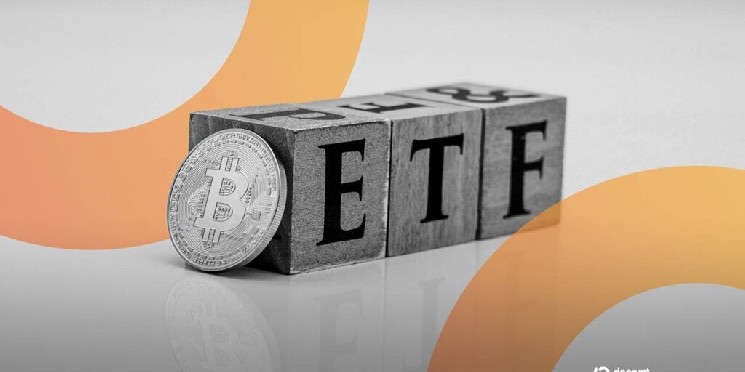Bitcoin ETFs See Strong Inflows After Challenging Month, Signaling Potential Market Shift
Consecutive $300 Million Influx Renews Optimism Following August Outflows
In a notable reversal of recent trends, U.S. spot Bitcoin exchange-traded funds (ETFs) have recorded two consecutive days of substantial inflows, each exceeding $300 million. This development has sparked renewed optimism in the cryptocurrency market after what had been a challenging month marked by significant capital outflows.
BlackRock’s IBIT emerged as the leading beneficiary, attracting $362.7 million across the two-day period, while Fidelity’s FBTC contributed an additional $142.5 million to the positive flow. According to data from Farside Investors, FBTC led inflows on Tuesday, with IBIT taking the lead position on Wednesday. This pattern represents a meaningful break from the concerning trend observed in late August, when nearly $650 million exited Bitcoin ETFs over just two trading sessions.
Dean Chen, analyst at Bitunix, indicated to Decrypt that these inflows have provided “short-term support to market sentiment.” However, he cautioned that given August’s overall net outflows, the current rebound appears more like “concentrated dip-buying” rather than a definitive shift in market direction. Chen attributed the capital movement to several factors, including “market-making arbitrage mechanisms” that tend to amplify inflows during price pullbacks, institutional investors strategically “scaling in during the correction to lower their average cost,” and rotation from Ethereum ETFs, which simultaneously recorded their second consecutive day of outflows totaling $135.3 million.
Investors Shifting Focus Back to Bitcoin Amid Economic Uncertainty
The recent capital flows suggest a strategic reallocation of investment priorities in the cryptocurrency space. Illia Otychenko, lead analyst at CEX.IO, noted that investors appear to be “reallocating funds back into BTC from ETH, as uncertainty lingers over what may follow a potential rate cut this month.” This observation highlights how macroeconomic factors continue to influence digital asset investment strategies.
Otychenko further elaborated that while Ethereum ETFs outperformed Bitcoin throughout much of August, “since August 28, the trend appears to be gradually reversing, with Bitcoin showing a steady increase in positive capital rotation.” This shift indicates a potential recalibration of investor sentiment toward the relative value propositions of the two leading cryptocurrencies.
Maria Carola, CEO of StealthEx, offered additional context to this trend, suggesting that institutions and investors “appear to be rotating into Bitcoin as a long-term hedge” amid persistent concerns surrounding fiat currency debasement. She highlighted a noticeable market preference for “stability and store-of-value narratives over growth and utility narratives” in the current economic climate, underscoring Bitcoin’s enduring appeal as a potential inflation hedge during periods of monetary uncertainty.
Bitcoin Price Dynamics and Options Market Sentiment
The renewed interest in Bitcoin ETFs comes as the cryptocurrency trades at approximately $110,800, representing a modest decline of 0.4% over the past 24 hours according to CoinGecko data. Despite this daily fluctuation, Bitcoin remains down nearly 11% from its recent all-time high of $124,545, suggesting potential room for recovery if positive sentiment continues to build.
Interestingly, options traders appear to be positioning themselves bullishly for the September 26 expiry, with “open interest building at $120,000, $130,000, and $140,000 strikes,” as previously reported by Decrypt. This options activity indicates that despite recent price consolidation, many sophisticated market participants maintain an optimistic outlook on Bitcoin’s near-term price potential.
However, market analysts remain cautious about declaring a definitive trend reversal based solely on two days of positive flows. Dean Chen emphasized that “to confirm whether the market is truly entering a reversal phase, investors will need to see continued inflows over the coming days.” He further elaborated that reversing August’s broader outflow trend would require “several consecutive days, if not weeks, of sustained inflows,” suggesting that the current positive momentum should be viewed with measured optimism.
Macroeconomic Factors and Global Trade Tensions Influencing Cryptocurrency Markets
The broader economic landscape continues to play a significant role in shaping cryptocurrency market dynamics. Trade tensions have recently added another layer of macroeconomic uncertainty, with President Trump characterizing U.S.-India trade relations as “a totally one-sided disaster” in a Truth Social post on Monday, while simultaneously imposing substantial 50% tariffs on imports from the country.
These geopolitical developments carry potential implications for inflation expectations and monetary policy, which in turn influence cryptocurrency valuations. QCP Capital warned in its latest market report that “new tariffs could push expectations higher” for inflation, potentially reinforcing Bitcoin’s appeal as a hedge against currency devaluation and inflationary pressures.
The interplay between traditional financial markets and cryptocurrencies has become increasingly pronounced as institutional adoption grows through vehicles like ETFs. Federal Reserve monetary policy decisions, particularly regarding interest rates, have emerged as crucial factors in determining capital flows into digital assets. With speculation mounting about potential rate cuts, investors appear to be positioning themselves strategically across the cryptocurrency ecosystem, with Bitcoin currently benefiting from this tactical reallocation.
Long-Term Outlook: Sustainability of the Current Trend
While the immediate reversal in ETF flows has generated cautious optimism, market observers emphasize the importance of sustained momentum to establish a genuine trend reversal. The cryptocurrency market’s notorious volatility means that short-term capital movements must be contextualized within broader patterns before drawing definitive conclusions.
The rotation from Ethereum ETFs into Bitcoin products suggests a nuanced shift in investor priorities rather than a simple risk-on or risk-off dynamic. Bitcoin’s established narrative as “digital gold” appears to be resonating more strongly in the current environment than Ethereum’s utility-focused value proposition. This preference for stability over speculative growth potential may reflect heightened economic uncertainty as investors seek assets with demonstrated resilience during periods of financial stress.
As September progresses, market participants will closely monitor daily ETF flows for confirmation of a sustained trend reversal. The convergence of several important factors—including potential Fed rate decisions, options expiries, and evolving trade tensions—creates a complex backdrop against which Bitcoin’s price action will unfold. For now, the consecutive days of strong inflows represent a welcome development for Bitcoin proponents after a challenging August, though prudent investors will likely require additional confirmation before declaring the correction definitively concluded.
The continued institutional engagement with cryptocurrency markets through regulated products like ETFs underscores the asset class’s evolution from its early days as a fringe investment to its current status as an increasingly mainstream component of diversified portfolios. Whether the current positive momentum can be sustained will depend on a complex interplay of technical, fundamental, and macroeconomic factors in the weeks ahead.














